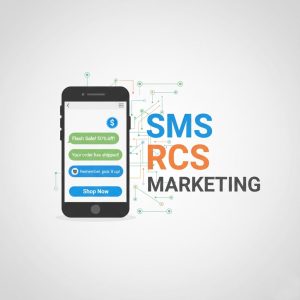How to Build a Mobile Optimized Funnel

A whopping 60% of online traffic now comes from mobile devices. This shift in user behavior underscores one thing for businesses and marketers alike—mobile optimization isn’t optional; it’s essential. Without a mobile-optimized funnel, you might be missing out on a majority of potential leads, customers, and sales.
But where should you begin? How do you create a seamless, results-driven funnel for mobile users? This guide will walk you through the entire process, from understanding your audience to optimizing each stage of the funnel for a better user experience and higher conversion rates.
What is a Mobile Optimized Funnel?
A mobile-optimized funnel refers to the customer acquisition pathway designed specifically to accommodate smaller screen sizes, touch-based interactions, and mobile browsing habits. Unlike traditional funnels, mobile funnels place an emphasis on speed, simplicity, and intuitive navigation.
This transformation applies across every step of the awareness to conversion. And the benefits? Higher engagement rates, better conversions, and happier customers who stick around.
Why Mobile Optimization is Crucial
Here are some reasons why building a mobile-optimized funnel should be at the top of your priorities list:
- Mobile traffic dominance: Over half of internet browsing is mobile, making it the primary battlefield for competition.
- Improved user experience: A poorly optimized funnel leads to frustration and high bounce rates. Gain your audience’s trust with functional and friction-free designs.
- Google prioritizes it: Mobile-first indexing means Google predominantly uses the mobile version of your content to rank it on search engines.
Now that you’re convinced, it’s time to focus on building specifically tuned for mobile users.
Steps to Build Your Mobile Optimized Funnel
Start With Understanding Your Mobile Audience
Before building your funnel, spend time getting to know your mobile audience. Understanding their behaviors, needs, and pain points will help you design a funnel that works.
How to research your audience effectively:
- Analyze mobile traffic behavior: Tools like Google Analytics can show how mobile users interact with your website. Identify key metrics like bounce rate, dwell time, and exit pages.
- Survey your audience: Ask your users questions to uncover specific challenges they face using mobile devices.
- Competitor analysis: Study how competitors serve their mobile audience. Take notes on what works in their funnel and adapt it to your own strategy.
When you know your audience, you’ll be able to tailor your funnel to their preferences and expectations.
Design for Mobile First
Mobile-first design is no longer an afterthought; it is the standard. Begin by designing for smaller screens, then gradually expand to desktop.
Key principles of mobile-first design:
- Use responsive design to ensure your funnel adapts seamlessly to different screen sizes.
- Keep navigation simple and intuitive. Hamburger menus or swipe gestures make browsing easier for mobile users.
- Prioritize finger-friendly design with tap-target sizes that are easy for users to click, avoiding accidental taps.
- Avoid large images and flashy elements that increase loading time.
Optimize Page Load Speed
Did you know that even a 1-second delay in page speed can reduce conversions by 7%? On mobile, where connections might be slower, this factor is even more critical.
Tips for faster mobile pages:
- Compress images to reduce file size without sacrificing quality.
- Use lazy loading to defer the loading of non-visible elements.
- Leverage browser caching to decrease repeat loading times.
- Invest in Accelerated Mobile Pages (AMP) to ensure quick-loading pages.
Craft Mobile Friendly Content
Your content must be skimmable and easy to engage with on smaller screens. Grab attention quickly and drive action effortlessly.
Best practices for mobile-friendly content:
- Use clear, concise headlines that immediately communicate value.
- Break up long chunks of text into bite-sized paragraphs.
- Utilize bullet points or numbered lists to improve scannability.
- Include mobile-optimized videos with captions for users consuming content without sound.
Simplify Forms
Forms are a critical component of your funnel, especially in the final stages of lead generation or checkout. But long, clunky forms can scare users away.
How to simplify forms for mobile users:
- Minimize the number of fields. Only ask for essential information.
- Use mobile-friendly input elements like dropdown lists and date pickers.
- Enable autofill options and smart suggestions to speed up data entry.
- Include clear, prominent CTAs with contrasting colors to guide action.
Include Mobile Payment Options
If your mobile funnel leads to a purchase, make sure payment is seamless and secure. Mobile users prefer speed and convenience when completing transactions.
Popular mobile payment strategies:
- Offer options like Apple Pay, Google Wallet, and PayPal for faster checkout.
- Implement one-tap checkout for returning customers to save their time.
- Use trust indicators such as secure payment icons to build credibility.
Implement Analytics to Monitor Performance
No funnel is perfect from the start. Regular performance reviews and data-driven changes will help you stay ahead of the curve.
Key metrics to measure:
- Funnel conversion rates (step-by-step drop-off points).
- Page load times on mobile devices.
- Bounce rates and session durations.
- Form completion and mobile payment success rates.
Use tools like Hotjar or Crazy Egg to create heatmaps for visual insights into how users interact with your funnel. Based on your findings, iterate and refine for better results.
Building for Mobile Success
Creating a mobile-optimized funnel isn’t just about catering to trends. It’s about building a personalized, frictionless experience for your audience that turns potential leads into loyal customers.
Start by analyzing your audience, designing with mobile-first principles, and optimizing every touchpoint for speed, simplicity, and clarity. Each tweak you make brings you one step closer to keeping users engaged and converting at higher rates.
Your audience is mobile, so make sure your funnel is ready to meet them wherever they browse.





